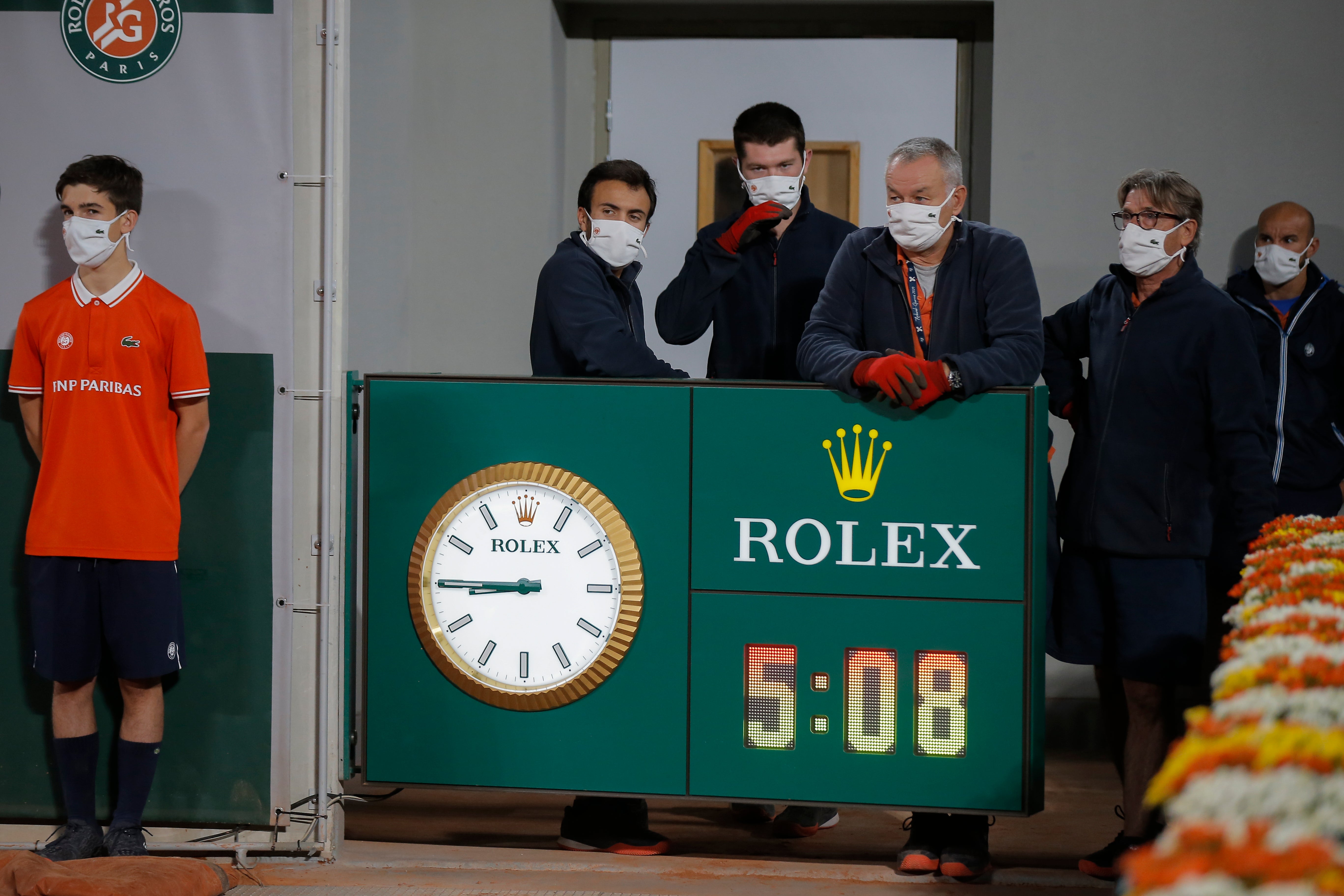Analysis: Let Slam rules be -- 5 sets; no 'breaker in Paris
Rafael Nadal does not need much help at the French Open but the 12-time champion might get some in the semifinals because opponent Diego Schwartzman is coming off a five-set, five-hour victory

As it is, Rafael Nadal would be a big favorite to win his French Open semifinal, of course. He is, after all, a 12-time champion and a combined 24-0 in that round and finals at Roland Garros; he's 9-1 against Friday’s opponent, Diego Schwartzman
There’s also this working in Nadal’s favor: He is coming off a three-set quarterfinal; Schwartzman toiled for five sets across 5 hours, 8 minutes in his previous match.
That’s an advantage Nadal earned, in part, by being more efficient. He deserves any edge it gives him — just like Schwartzman had an edge in his quarterfinal against Dominic Thiem who had gone five sets in the fourth round. That’s merely one reason that any discussion of switching from best-of-five-set matches to best-of-three for men at Grand Slam tournaments is misguided.
Others: The current format allows for more plot twists, more comebacks, more suspense, more drama; it makes major championships distinct from lesser events; it rewards superior stamina and focus; it fosters fascinating and — sometimes, though not always — memorable matches.
When Stefanos Tsitsipas the 22-year-old from Greece who faces No. 1 Novak Djokovic in the semifinals Friday, talked about skipping school to watch Roland Garros on TV as a kid, the first match that sprang to mind was a 6-hour, 33-minute win for Fabrice Santoro over Arnaud Clement in 2004 that ended 16-14 in the fifth.
“I watched some epic thrillers, five-set matches,” Tsitsipas said.
Each of the past four Slam men’s finals went five sets and were better for it; two ended in tiebreakers. That can't happen this Sunday, and that's OK.
That's why it's also misguided to think the French Open should join the other tennis major tournaments in adopting final-set tiebreakers.
“The subject has been discussed,” the French tennis federation told The Associated Press in a statement in response to a question about switching from win-by-two-games to a tiebreaker, “but for the moment, we are not changing this rule.”
Nor should they, even if it's true that men’s matches that go past 6-all in the fifth clearly compromise whoever emerges victorious (although Santoro did win his next outing, also in five sets, 16 years ago).
Look at the first round in Paris this year: Five contests went beyond 6-all; every winner lost in the second round.
American Marcos Giron was among that group, winning via an 8-6 final set, then was defeated in straight sets the next time out.
Still, he favors keeping things as they are.
“There’s so much more time for the ebbs and flows of the match, for players to kind of get momentum and to see how players can use match management and the combination of fitness and the mental side,” Giron said. “It’s tremendous.”
Lorenzo Giustino’s 0-6, 7-6 (7), 7-6 (3), 2-6, 18-16 victory against Corentin Moutet lasted 6 hours, 5 minutes.
Here is how the Italian described his status after managing just six games against Schwartzman in the second round: "I woke up this morning with a fever. A headache. Nausea. I wanted to throw up. I felt bad. I didn’t feel like eating. ... It was beautiful to win a match (18-16), but the physical toll was terrible.”
Giustino continued: “Sooner or later, I was going to die out there."
Naturally, he said he’d like to see a tiebreaker in the fifth — “At least that way, you get to a fork in the road” — something the U.S. Open added in 1970, although its final never came down to that until last month, when Thiem edged Alexander Zverev in a nerve-filled championship match low on quality but high on the can’t-turn-away meter.
Giustino’s biggest complaint about today’s setup in tennis is “there should be the same rules everywhere,” because, he explained, “Fans say, ‘Hey, wait, last week, it was three sets; now it’s five sets and there’s no tiebreaker? How is that possible? What’s happening?’”
The Australian Open (first to 10 at 6-all) and Wimbledon (first to seven at 12-all) switched to unique versions of tiebreakers last year, sparked by Kevin Anderson’s 26-24 win over John Isner in the 2018 semifinals at the All England Club.
Isner also was part of the longest match in the sport’s history, which ended 70-68 in the fifth at Wimbledon in 2010.
“We overreacted to two John Isner matches, but I don’t know if they’re ever going to go back,” said American Sam Querrey, who lost in five sets after taking the first two against eventual quarterfinalist Andrey Rublev last week. “I like playing it out and seeing what happens.”
Some want tiebreakers. Some want to switch to best-of-three for all Grand Slam matches. Some say do that just for Week 1, then stick with best-of-five in Week 2.
If a significant switch were considered, American Jack Sock knows where he stands.
“Ultimately,” he said, “I would hope the players would have a say.”
___
AP Sports Writers John Leicester in Paris and Andrew Dampf in Rome contributed to this report.
___
Howard Fendrich covers tennis for The Associated Press. Write to him at hfendrich@ap.org and follow him on Twitter at https://twitter.com/HowardFendrich
___
More AP tennis: https://apnews.com/apf-Tennis and https://twitter.com/AP_Sports
Subscribe to Independent Premium to bookmark this article
Want to bookmark your favourite articles and stories to read or reference later? Start your Independent Premium subscription today.
